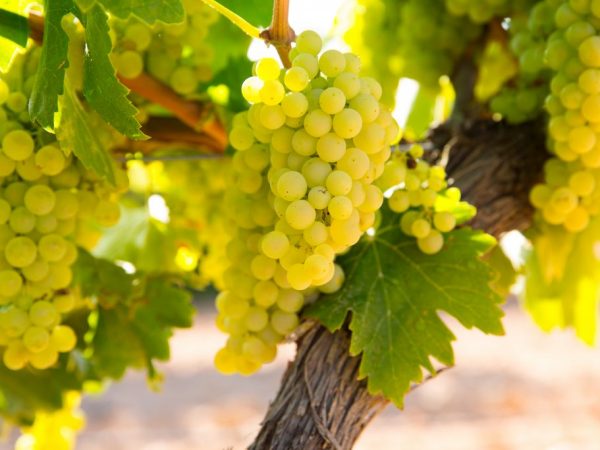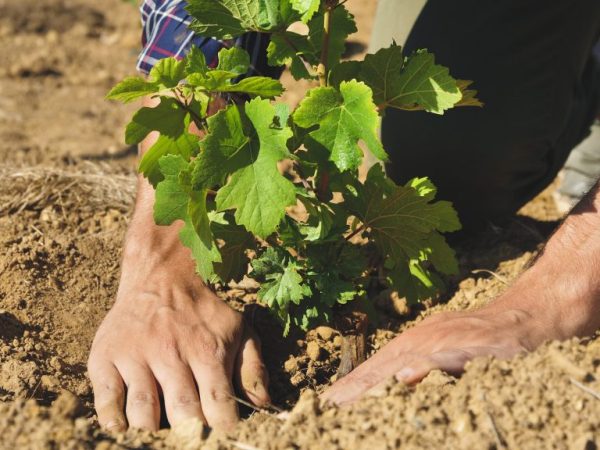Description of Nelson grapes
The Nelson grape is a young variety, it has not yet been fully studied, but it has already managed to fall in love with many summer residents for its taste and good yield.

Description of Nelson grapes
Variety characteristics
Nelson ripens early. Fruiting begins in early August. The variety is characterized by high productivity, has good resistance to frost down to -23 ° C. The bunches retain their presentation for a long time and are excellent for long-term storage, the berries do not burst during transportation.
Nelson is perfect as an ornamental plant, his vigorous bushes will be a wonderful decoration for the garden. It grows rapidly and forms an excellent hedge.
The Nelson grape variety has vigorous bushes. They can grow up to 1.6 m in height. Shoots up to 2 cm in thickness, fast growing. The flower is bisexual, the presence of other varieties for pollination is not necessary. The leaves are deep green in the form of a trefoil, their ends are slightly dissected.
Description of fruits:
Bunches of medium density, weighing from 500 to 700 g, with proper care, the weight reaches more than 1 kg. The berries are round-oval, large, yellow-green in color, up to 2 cm in length, weighing 13-16 g. The skin is thin. The pulp is dense, crispy, characterized by a pronounced nutmeg taste and aroma. The fruit may contain 1-2 seeds.
Ripe fruits remain on the branches for a long time, accumulating sugar in themselves. Harvesting is carried out until mid-September, otherwise the fruits will begin to turn into raisins.
Growing
The grapes are a warm and light-loving plant; for its planting, the southern, south-western and western sides of the summer cottages are used. This contributes to the production of sweet berries and faster growth. There should be no trees within a radius of 3-6 meters from the plant, so as not to interfere with the root system. For planting, choose only healthy seedlings: the root at the cut site should be white, and the eyes should not fall off when pressed.
Disembarkation

The seedling must be tied to the stake
Description of the disembarkation process:
- Dig a hole 80 cm in diameter and the same depth. A layer 25 cm thick is laid at the bottom, consisting of a mixture of soil and humus. This will provide additional nutrition to the plant.
- Mineral fertilizers are poured in: 300 g of superphosphate and the same amount of potash fertilizers. Stir with earth and compact.
- Set the count. After planting, a seedling is tied to it to provide the latter with greater stability.
- A seedling is placed in the pit, evenly spreading its roots, and they cover it with earth.
- The plant is watered with 2-3 buckets of water. The next watering is done in two weeks.
Care
Nelson is a vigorous variety, in the fall it is imperative to prune it, removing weak shoots.
You need to take care of regular watering, the roots of the grapes love moisture. Usually 25-30 liters are enough, but on dry days the amount is increased to 40-45 liters per bush.
The most convenient way to water is with a pipe. It is installed in a pit during planting. About 10-15 cm should be visible on the surface, the diameter of the pipe is 10 cm. It is also convenient to deliver fertilizers into the soil with it, this contributes to good growth and a large harvest.
Mulch should be placed next to the bush, this will help the soil to retain moisture and in the absence of watering for a long time, the plant will not dry out. Among other things, it also inhibits the growth of weeds. To enrich the soil with oxygen, it should be periodically loosened.
Conclusion
The description of the Nelson grape variety speaks of the merits. It tolerates winter well, ripens quickly, gives a good harvest, retains its taste for a long time, is excellently transported and is also suitable for decoration. The flowers are bisexual and the plant does not require additional pollination. Nelson will be a great decoration for your site.


